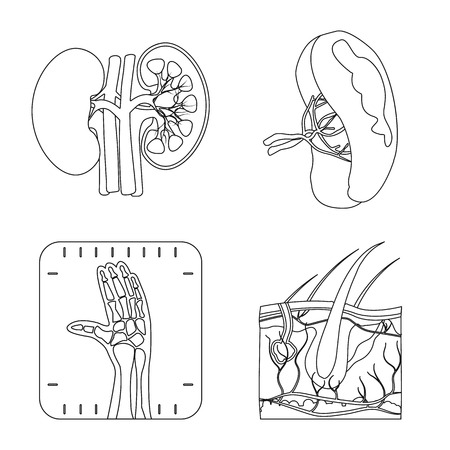Introduction: The Landscape of Cancer Survivorship in the UK
In recent years, the number of people living with and beyond cancer in the UK has risen dramatically. Thanks to advances in early diagnosis and improved treatment protocols, survival rates have steadily increased, transforming cancer from an acute illness into a chronic condition for many. According to Macmillan Cancer Support, there are now over 3 million cancer survivors across the nation, and this figure is projected to rise significantly over the coming decade. However, surviving cancer is only part of the journey; many individuals face ongoing challenges that extend well beyond their initial treatment. Persistent fatigue, reduced physical function, mental health struggles, and fears of recurrence are common experiences. Within the NHS framework, there has been a growing recognition of the importance of holistic aftercare—going far beyond medical follow-up appointments alone. Exercise and physical activity have emerged as vital components in supporting long-term recovery and quality of life. Integrating evidence-based approaches to physical activity into survivorship care is not just a clinical recommendation but a necessity for empowering individuals to reclaim their lives post-treatment. This evolving landscape demands that we look at survivorship through a wider lens—one that values whole-person wellbeing and encourages practical, accessible support throughout every stage of recovery.
2. Benefits of Exercise and Physical Activity Post-Cancer
Emerging evidence from UK-based research has consistently highlighted the crucial role that exercise and physical activity play in the lives of cancer survivors. Adopting an active lifestyle following a cancer diagnosis is not simply about regaining lost strength; it’s a holistic approach that supports recovery, fosters resilience, and enhances overall quality of life. Below, we summarise key benefits grounded in studies conducted across the UK.
Physical Benefits
Engaging in regular physical activity can counteract many side effects associated with cancer treatment, such as fatigue, reduced mobility, and muscle weakness. A study by Macmillan Cancer Support found that people who remained active after treatment reported improved energy levels and fewer lingering symptoms. The NHS also recognises that tailored exercise programmes can aid in restoring physical function and lowering the risk of recurrence for certain cancer types.
Table: Key Physical Benefits Supported by UK Studies
| Benefit | UK Evidence |
|---|---|
| Reduced Fatigue | Macmillan Cancer Support (2018): Active participants experienced 40% less fatigue. |
| Improved Mobility & Strength | NHS England pilot schemes showed marked improvements in post-treatment mobility. |
| Lower Recurrence Risk | Bristol University research indicated lower relapse rates among physically active survivors. |
Psychological Benefits
The mental health impact of cancer cannot be overstated. In the UK, numerous survivorship programmes have demonstrated that regular movement significantly reduces anxiety, depression, and stress levels. Participating in group activities or local walking clubs has given survivors a renewed sense of purpose and control, key factors in psychological wellbeing.
Mental Health Outcomes from UK Practice:
- Anxiety Reduction: Participants in Maggie’s Centres’ exercise initiatives reported feeling calmer and more optimistic.
- Enhanced Mood: Studies show that structured physical activity alleviates depressive symptoms post-cancer.
- Cognitive Function: The MOVE charity found links between regular exercise and sharper cognitive performance among survivors.
Social Benefits
Cancer can feel isolating, but engaging with others through physical activity helps rebuild social connections. Across the UK, local “parkrun” events, community yoga classes, and sports clubs have provided invaluable spaces for peer support. These interactions foster belonging and mutual encouragement—crucial for long-term recovery.
Summary Table: Social Outcomes from UK Programmes
| Social Outcome | Description/Example from UK Context |
|---|---|
| Increased Social Engagement | Cancer survivors participating in community exercise schemes report wider social networks. |
| Sustained Motivation | Peer-led groups (e.g., Macmillan Move More) increase accountability and adherence to routines. |
| Sense of Belonging | Local running clubs provide non-judgemental spaces for shared experiences. |
Together, these benefits demonstrate that integrating physical activity into post-cancer care is not just good practice—it is essential to helping survivors reclaim their lives physically, mentally, and socially within the fabric of everyday British life.

3. Current UK Guidelines and Recommendations
In the UK, exercise prescription for cancer survivors is strongly influenced by comprehensive national guidelines developed by leading organisations such as the National Institute for Health and Care Excellence (NICE) and Macmillan Cancer Support. These authorities have played a pivotal role in shaping the landscape of survivorship care, ensuring that physical activity is integrated into routine clinical practice across the country.
NICE Guidelines: A Foundation for Evidence-Based Practice
NICE provides detailed recommendations concerning physical activity for adults living with and beyond cancer. Their guidance, particularly NG101, highlights the importance of individualised assessments and encourages healthcare professionals to advise all cancer survivors to gradually return to, or maintain, regular physical activity as soon as possible during and after treatment. NICE also stresses the value of multidisciplinary support, including physiotherapists and specialist exercise professionals, to ensure safety and maximise benefits for each patient.
Macmillan Cancer Support: Translating Policy into Practical Support
Macmillan Cancer Support has been instrumental in translating these policy recommendations into practical resources for both patients and clinicians. They advocate for the “Move More” approach, which empowers survivors through tailored information, motivational support, and access to community-based programmes. Macmillan’s materials are frequently used by NHS staff to help survivors overcome barriers to exercise—whether those be physical, emotional, or social.
Impact on Clinical Practice
Together, NICE and Macmillan guidelines have shifted the mindset within UK oncology services. Healthcare teams are now more likely to discuss physical activity during follow-up appointments and incorporate exercise prescriptions into survivorship care plans. This evidence-based approach ensures that advice is not only safe but also achievable in everyday British life—encouraging activities like brisk walking in local parks, gentle cycling on traffic-free paths, or group sessions at community leisure centres. The focus remains on gradual progression and personalised support, acknowledging the unique challenges faced by each survivor.
4. From Theory to Practice: Evidence-Based Interventions in the UK
Translating research into real-world support for cancer survivors has become a hallmark of the UK’s approach to exercise and physical activity in survivorship. Across the country, numerous evidence-based programmes are making a tangible difference in patients’ lives—delivered by the NHS, local authorities, charities, and community groups. Here, we showcase how these interventions work in practice, drawing from both national frameworks and grassroots innovation.
NHS-Led Exercise Initiatives
The NHS has taken significant steps in integrating exercise into cancer care pathways. The Macmillan Move More programme, for example, is rolled out across several NHS Trusts and aims to make physical activity a standard part of post-treatment care. Patients are referred directly by oncology teams to specialist exercise professionals who tailor activities based on medical history, treatment side effects, and patient preference.
| Programme | Location | Key Features |
|---|---|---|
| Macmillan Move More | England, Scotland, Wales | Personalised plans, group classes, peer support |
| NHS Prehab4Cancer | Greater Manchester | Prehabilitation & rehabilitation for all cancer types; gym sessions, home-based options |
| Penny Brohn UK Living Well Services | Bristol & Nationwide (virtual) | Holistic support: exercise, nutrition, stress management |
Community-Driven Programmes Making a Difference
The power of community engagement cannot be underestimated. Local councils and voluntary organisations have stepped up to provide accessible opportunities for survivors at every stage—regardless of background or postcode. For instance:
- Cancer Exercise Specialists in Leisure Centres: Many local gyms now offer specialist-led classes for people living with or beyond cancer. These sessions focus not only on improving strength and stamina but also on rebuilding confidence and social connection.
- Phoenix Fit Club (London): This grassroots initiative partners with oncology nurses to deliver weekly outdoor bootcamps designed specifically for those recovering from treatment.
- Cancer Research UK Parkrun Partnerships: Survivors are encouraged to join the 5K Parkrun movement as walkers or runners—with dedicated support from volunteers who understand their journey.
Barriers Addressed Through Innovation
The most successful programmes respond directly to survivors’ needs—removing financial barriers (often free at point of use), offering flexible session times, and providing both in-person and virtual options. Many services also train staff in cancer-specific needs so that participants feel understood and safe.
An Example of Integrated Pathways: Prehab4Cancer Model
The Prehab4Cancer model in Greater Manchester exemplifies how multi-agency collaboration can enhance outcomes. Patients receive an assessment before starting treatment and are given a bespoke plan combining exercise, nutrition advice, and psychological support—all coordinated between NHS clinicians and local leisure providers.
| Step | Description |
|---|---|
| Referral & Assessment | Cancer team refers patient; initial needs assessed by exercise professional. |
| Bespoke Plan Creation | Personalised plan covering physical activity, diet, and emotional wellbeing. |
| Support Delivery | Sessions delivered at leisure centres or at home (virtual), regular check-ins. |
| Follow-Up & Transition | Ongoing support as patients transition back into community life or work. |
This integrated approach is rapidly becoming a gold standard referenced throughout the UK—a testament to what’s possible when evidence meets empathy and local context.
5. Barriers and Enablers to Physical Activity among Survivors
For many cancer survivors in the UK, the journey towards regular physical activity is marked by a unique set of challenges and motivators. Understanding these barriers and enablers is key for designing effective interventions that truly resonate with survivors’ real-world circumstances.
Common Challenges: The Reality on the Ground
One of the most significant hurdles faced by UK cancer survivors is fatigue—often described as more profound than ordinary tiredness. This persistent exhaustion can linger long after treatment ends, making even light exercise feel overwhelming. Moreover, access to specialist rehabilitation or exercise services remains inconsistent across different NHS trusts and regions. Waiting lists can be lengthy, and rural communities may have limited facilities or transport options, amplifying feelings of isolation.
Cultural Attitudes and Awareness
There’s also a distinct cultural dimension at play. While public health messages increasingly champion “getting active,” traditional British reserve sometimes leads to reluctance in seeking group activities or asking for help. Many survivors express uncertainty about what types of exercise are safe post-treatment, with some fearing they might “overdo it” or worsen their symptoms. Misinformation or lack of tailored advice from healthcare providers can further impede progress.
Systemic Barriers: Navigating the Healthcare Maze
Within the NHS framework, resources are often stretched, and cancer rehabilitation isn’t always prioritised amid other pressing demands. Referral pathways to physiotherapists or exercise professionals can be unclear, especially in primary care settings. For those balancing work, family life, and ongoing medical appointments, finding time for structured activity poses an additional logistical challenge.
Enablers: What Makes a Difference?
On the positive side, there’s growing recognition among UK clinicians of the benefits of movement during recovery. Charities like Macmillan Cancer Support and local leisure centres are increasingly offering tailored programmes—such as “Move More”—that bridge gaps between hospital care and community-based support. Peer networks, both online and in person, provide encouragement and practical tips grounded in lived experience.
Towards a Supportive Environment
Ultimately, fostering a supportive environment—where survivors feel empowered to ask questions and try new activities without judgement—is vital. Small wins matter: whether it’s walking around the block or joining a gentle yoga class at a local village hall. By addressing both individual concerns and broader systemic issues, UK practice is gradually shifting towards holistic survivorship care where physical activity becomes not just possible but genuinely sustainable.
6. Personal and Professional Perspectives: Voices from the Field
Cancer survivorship is a deeply personal journey, and in the UK, the experiences of survivors and healthcare professionals shape how exercise and physical activity are woven into recovery. Listening to those who have walked this path reveals not just evidence-based recommendations but also day-to-day realities, challenges, and triumphs.
Survivors’ Stories: Starting Small, Growing Stronger
Many UK cancer survivors echo a similar sentiment: “Start where you are.” Jane, a breast cancer survivor from Manchester, shared, “My Macmillan physiotherapist encouraged me to take daily walks. Some days it was just five minutes around my garden, but slowly, I found confidence and strength returning.” This gradual approach—often supported by NHS rehabilitation teams—shows that even modest movement can make a tangible difference.
Overcoming Barriers: Realistic and Relatable Advice
Fatigue, fear of injury, and uncertainty about what’s safe can all hold people back. David, who completed treatment for bowel cancer in London, reflects: “At first, I worried exercise would set me back. But my specialist nurse reassured me that gentle yoga or chair-based exercises were perfectly fine. Over time, these routines boosted both my mood and my mobility.” The message here is clear: adapt activity to your own pace, listen to your body, and don’t be afraid to ask for professional guidance.
The Healthcare Professional’s Perspective
NHS physiotherapists and clinical exercise specialists play an essential role in empowering patients. Dr. Emily Foster, an oncology physio based in Birmingham, shares: “We work with each person’s unique needs—whether it’s managing lymphoedema after breast surgery or building up stamina post-chemotherapy. Setting achievable goals is key; we celebrate every small win.” Professionals across the UK often recommend local walking groups, online resources like Macmillan Move More, or tailored classes run through community centres.
Community Support Makes a Difference
Peer support is frequently highlighted as invaluable. Survivors often say that joining local activity groups or online forums helped them stay motivated and combat isolation. “Knowing others understood what I was going through made me feel less alone,” says Priya from Leeds.
Practical Takeaways from the Field
- Start with what feels manageable—every little counts
- Seek professional advice if unsure about which activities are safe
- Find community support—local groups can offer encouragement and accountability
- Pace yourself; recovery is individual and non-linear
The voices from across the UK demonstrate that exercise during cancer survivorship isn’t about running marathons; it’s about regaining agency over your body and wellbeing one step at a time. By drawing on both professional expertise and lived experience, survivors can find realistic ways to integrate movement into their lives—even on the hardest days.
7. Future Directions: Building a Supportive Culture for Active Survivorship
Looking ahead, the landscape of cancer survivorship care in the UK is set to evolve rapidly, with exercise and physical activity playing an increasingly central role. As we continue to amass robust evidence supporting the benefits of movement for cancer survivors, several emerging trends and initiatives are shaping a future where active living becomes a cultural norm rather than an exception.
Emerging Trends in Exercise Oncology
The integration of exercise specialists into multidisciplinary cancer care teams is gaining traction across NHS trusts. Programmes such as prehabilitation—where patients engage in tailored physical activity before treatment—are being piloted and rolled out nationwide. This proactive approach not only prepares survivors physically but also empowers them mentally for the road ahead. Moreover, digital health solutions are providing accessible platforms for personalised exercise guidance, bringing support into the homes of those who may struggle to attend in-person sessions.
Policy Initiatives Driving Change
The UK government and leading charities like Macmillan Cancer Support are championing policy shifts that place lifestyle interventions at the heart of survivorship care plans. The NHS Long Term Plan explicitly calls for personalised care, including routine physical activity assessment and referral as part of cancer pathways. Funding streams are beginning to reflect this priority, enabling more local authorities to develop community-based exercise programmes tailored to diverse survivor populations.
Innovative Practices Shaping Tomorrow
Pioneering projects in cities like Manchester and Glasgow are demonstrating the power of social prescribing, where GPs refer survivors to local walking groups, yoga classes, or gym sessions as part of their recovery. University-led research collaborations are trialling new models such as virtual group classes and peer mentor schemes, helping break down barriers like isolation and low motivation. These innovations are grounded in real-world experience from both clinicians and survivors, ensuring they remain relevant and effective.
Cultivating a Supportive Culture
Ultimately, the future of exercise in UK cancer survivorship lies not just in clinical recommendations but in fostering a supportive culture that values movement at every stage. This means training healthcare professionals to confidently discuss physical activity with their patients, addressing inequalities in access across rural and urban communities, and celebrating success stories that inspire others to get active. By embedding these practices within our national identity—much like our love for a Sunday stroll or a local parkrun—we can ensure every survivor has the opportunity to thrive through movement.
The journey ahead will require collaboration between policymakers, practitioners, researchers, and survivors themselves. By embracing innovation and championing inclusivity, the UK can lead the way in making exercise a cornerstone of long-term wellbeing after cancer.


